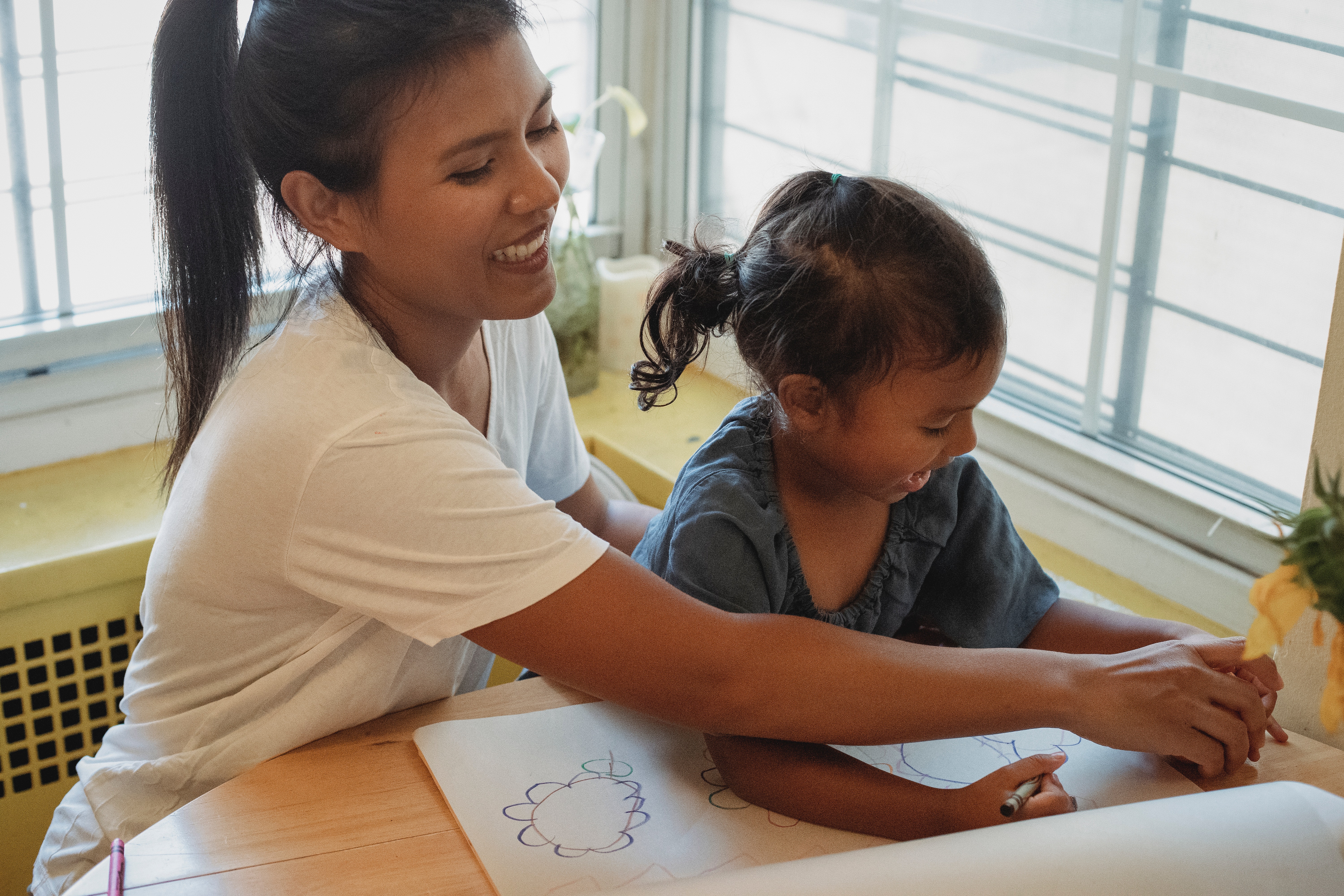
At Maryvale, we are proud to offer a bilingual learning environment where young children can hear, learn, and speak in both Spanish and English. The value of bilingual staff in an early education environment is immeasurable. By hearing and speaking the language they speak at home while at school, kids establish social bonds and trust with teachers and staff and can see parallels between themselves, their families, and those in positions to care for them and teach them new skills.
In addition, bringing an additional language into the classroom is good for learning as a whole, even during infancy. Psychologists are exploring how bilingual education helps expand children's eagerness to learn and facilitates a quick acquisition of skills in both English and Spanish.
Being bilingual is an asset in life and in early childhood development. Children between the ages of 0 and 3 have extremely flexible brains and are best suited to learning basic skills in more than one language. Infants as young as six months old have demonstrated that they can detect a switch between languages. During what neuroscientists call the critical period – or the years before puberty – children can learn with more skillfulness and phonetic integrity than they will be able to do past their teenage years. In other words, while anyone can learn a new language, the chances of sounding like a native speaker are diminished after childhood. As with so much in early childhood development, word recognition and development expand drastically when a baby is just 18 months old. The ability to do this across languages sets the stage for advanced cognitive ability and has been shown to increase a child's capacity for critical thinking, empathy, and relationship building.
Just how early does a bilingual learning environment have an impact on a child's brain? Anyone who spends time around infants and babies knows that they love to imitate adults. This is true across their gestures, expressions, and the sounds they make. While infants cannot form words, they will playback the sounds and phonetic patterns they hear from the adults who look after them. If there is a coherent pattern of words, sounds, and intonations that links their experience at home with what they hear in the care of an early childhood educator, chances are, they will begin to babble in Spanish or both Spanish and English. Beginning to recognize sounds, meanings, and words during infancy lays the groundwork for a bilingual life.
Being bilingual has a material value for kids and their families and can serve as a long-term asset as children grow up. On a psychological level, bilingual children have a demonstrated history of success in solving mental challenges – including things that have nothing to do with language. Color, number, and shape recognition are all augmented in children with bilingual capacity - which indicates that later in life, bilingual people are set up for success when it comes to balancing mental complexity, multi-tasking, spatial and directional understanding, and more. Bilingual children benefit from cognitive flexibility, meaning they are able to quickly synthesize information and solve advanced problems with more success than children who speak just one language.
This may be obvious to some; however, it is worth noting that children learn more effectively in their native language. At an early age, toggling between English and Spanish is less about learning another language and more a matter of acquiring a more expansive way of communicating. When English is imposed upon children in the classroom, a mental divide forms between what they experience in their homes, neighborhoods, and communities and what they're offered at school. An environment that makes children's learning process a priority in tandem with their mental health should meet students where they are and build integrations between their home life and their learning as much as possible. When children receive the psychological safety cues that come through linguistic nuance in their native language, they are more likely to learn in a classroom.
Bilingual education reflects our commitment to equity. All too often, the world expects multilingual people to assimilate to a dominant culture and way of being. When English is forced on children at an early age, it endangers their sense of identity and ability to self-actualize as complex, multifaceted, unique individuals. A bilingual learning environment welcomes children to show up as their whole, multicultural selves and can facilitate emotional bonds between educators and students, as well as between students and their peers. Outside of school, the social and emotional benefits of being bilingual are vast. Children who nurture their mother tongue can communicate with extended families – particularly older generations – with ease; cultural values, traditions, and family lore can remain alive, and community bonds hold firm. Maintaining active use of a child's native language allows them to understand their cultural heritage, religious practices, and more.
As we've written about in the past, people from marginalized backgrounds are far more likely to experience mental upset or mental illness in their lives. We are proud to offer a supportive, nurturing, bilingual environment during children's critical years to support their physical and mental health.






